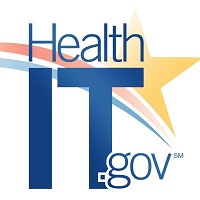 By Allison Dennis, Kevin Chaney, Tracy Okubo and
By Allison Dennis, Kevin Chaney, Tracy Okubo and
Teresa Zayas Cabán, ONC
Twitter: @ONC_HealthIT
The use of genetic testing is becoming increasingly routine in patient care. For example, tests are available to check newborns for genetic disorders, screen would-be parents for carrier status, inform cancer care, and evaluate potential pharmacogenetic associations. However, the laboratories that perform these tests face many challenges that keep them from being able to return clinical genomic results in a standardized way and fully leverage a patient’s electronic health record. This also affects healthcare professionals’ ability to deliver precision medicine and conduct precision medicine research. That’s where ONC’s Sync for Genes project comes in.
Sync for Genes Phases 1 and 2 and the Precision Medicine Initiative
Since it launched in 2016, the ONC Sync for Genes project has advanced the standardized sharing of genomic information between laboratories, providers, patients, and researchers. The project is one of many ONC activities being conducted under the Precision Medicine Initiative, a nationwide effort to tailor healthcare treatment and prevention strategies to people’s unique characteristics including biology as determined by their genome.
The first two phases of Sync for Genes focused on bringing genomics to the point-of-care while, at the same time, making the genomic data available for research. These phases resulted in important refinements to the Health Level Seven International (HL7®) Fast Healthcare Interoperability Resources (FHIR®) Clinical Genomics Domain Analysis Model and involved demonstrations of foundational versions of the HL7® FHIR® Clinical Genomics Implementation Guide.
Sync for Genes Phase 3: Engaging Laboratories
Sync for Genes Phase 3 aimed to identify the challenges experienced by testing labs when they adopt health IT standards in order to share genomic results. Specifically, it explored the use of the HL7 FHIR Genomics Reporting implementation guide for the sharing of clinical genomic results generated by testing labs. The two selected demonstration projects represented both labs that generate clinical genomic data and users who order tests and receive results:
- The Baylor College of Medicine Human Genome Sequencing Center (BCM-HGSC) is a genomic testing lab that returns DNA sequencing and genotyping results to sites participating in the National Institutes of Health National Human Genome Research Institute (NHGRI)-sponsored Electronic Medical Records and Genomics (eMERGE) Network.
- The National Marrow Donor Program Center for International Blood and Marrow Transplant Research partnered with Versiti, a histocompatibility testing lab. Together they developed a tool to convert human leukocyte antigens report data, which include DNA sequences, into FHIR format.
Both demonstration projects developed customized implementation guides based on the HL7 FHIR Genomics Reporting Implementation Guide, tailored to suit the two projects’ highly specialized use cases. The challenges and solutions identified over the course of the demonstrations were shared with the HL7 Clinical Genomics Work Group, which is using the solutions to improve the resources for future use.
While the majority of the recommendations are highly technical, they help shape broader efforts related to the capture of standardized genomic information that can be used within electronic health records. The increased ability of genomics testing laboratories to share data with providers in a standard way and the demonstration of those standards’ flexibility to accommodate new genomics testing is a significant step forward. Throughout Phase 3, each participating demonstration site documented their findings and recommendations and those insights and results are summarized in a comprehensive final report [PDF – 637 KB] available on HealthIT.gov.
What’s next? Sync for Genes Phase 4: Sharing Genomic Data with Individuals
As part of Phase 4, ONC is still currently recruiting for additional demonstration sites until next Friday(January 15th, 2021). Selected sites will help ONC test and improve the electronic exchange of genomic data between organizations with at least one data receiver, such as a patient or caregiver. More information is available on the Sync for Genes webpage.
Each phase of Sync for Genes has brought insight and progress towards seamlessly bringing genomic information to the point-of-care. The increasing ease with which genomic tests can be evaluated and understood by providers and their patients promises to accelerate the future of precision medicine.
We encourage you to get involved with HL7 and help shape the future of these important standards, all for the benefit of our patients.
This post was originally published on the Health IT Buzz and is syndicated here with permission.
